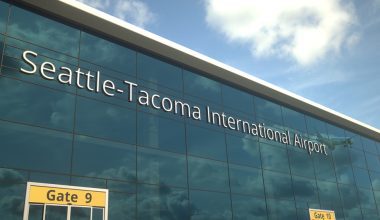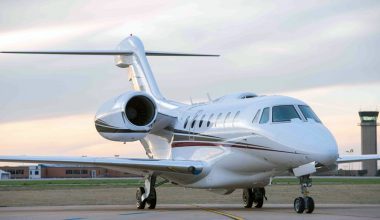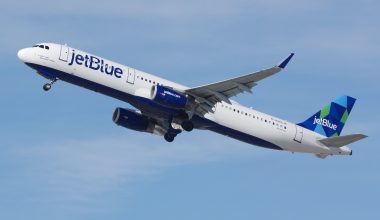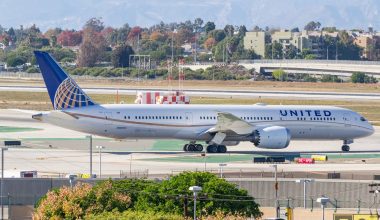Flying can be a bothersome exercise if you have to wait hours to get through airport security. The long waits at security will even be more frustrating when you receive an SSSS boarding pass. It’s because you will go through a much higher level of scrutiny and a more intensive screening process. What does SSSS boarding pass mean, and why do you get it?
SSSS code in boarding pass
SSSS, an acronym for Secondary Security Screening Selection, is an additional security measure that flags airline passengers for a thorough search at security checkpoints. SSSS is an intelligence-oriented, risk-based screening process that flags passengers to undergo additional security procedures at US airports. Airline passengers may get SSSS-issued boarding passes on domestic and international US flights.

Transportation Security Administration (TSA) maintains a database of high-risk passengers subject to additional airport inspection. For security reasons, such passengers will get SSSS boarding passes and receive enhanced screening of their bodies and belongings. Unlike normal passengers who tend to clear the security process smoothly, these people will be subjected to full-body patdowns, additional scans, a thorough baggage search, etc.
If you get an SSSS boarding pass, brace yourself for an intensive screening process either at the initial TSA screening area or the boarding gate. Rather than simply passing through a metal detector, there may be a need for full-body scanning and/or additional identity checks.
SSSS boarding pass: Purpose
Before the 9/11 attack, screening at US airports was piecemeal. But the terrorist attacks on September 11, 2001, were inhumane and inflicted a catastrophic toll on Americans. The sheer size of attacks and lingering effects fostered an array of security measures in the US to avoid repeating such events. One such measure is ‘SSSS,’ which seeks to augment flight security by identifying low and high-risk passengers and subjecting them to extra checks in the airport security and boarding process.
The US Department of Homeland Security (DHS) maintains a watch list of high-risk passengers likely to threaten aviation. The TSA’s Secure Flight System is a risk-based passenger prescreening program to identify known or suspected terrorists or other individuals who may threaten transportation or national security. It selects passengers by matching carrier-provided traveler information to the No Fly, Selectee List, or other watch lists. Such passengers will have ‘SSSS’ stamped in their boarding passes, i.e., getting additional screening before they access sterile airport areas or board aircraft.
Who gets the SSSS boarding pass?
Passengers placed in TSA’s ‘Selectee List’ will get SSSSS stamped on their boarding pass. The TSA adds passengers to the ‘Selectee List ‘ randomly or intentionally and puts them through enhanced physical screening. If you are on this list, you will receive SSSS designation and require extra time at the TSA. One of the reasons you might get an SSSS boarding pass is because your name is the same or similar to those on the TSA database. The TSA might keep you on the ‘Selectee List’ because the person on its watch list shares your name or any information with you.
One thing to remember is neither the TSA nor the airlines publish the exact criteria for issuing the SSSS code. According to the TSA, it has many names on the Selectee List, which is a secret and fluctuates over time.
Undoubtedly, identified individuals on US security agencies’ watchlist will have the SSSS designation on their boarding passes. Otherwise, certain red flags trigger the SSSS code in a boarding pass. You may get a dreaded SSSS boarding pass in case of inconsistent travel behavior like:
- Last-minute flight booking
- International one-way tickets
- Paying cash for tickets
- Unusual itinerary involving several stops on multiple continents
- Travel in high risk-countries
Sometimes, the non-payment of entry fees to designated places earlier can also trigger the SSSS stamp on your boarding pass. Besides, the non-matching of information on the boarding pass to the passenger’s ID (passport) can indicate a red flag.
Furthermore, you are entitled to invasive TSA screenings by default if you belong to a certain country. The citizens of high-risk countries are most likely to receive the SSSS code despite their bonafide status. At last, quad ‘S’ can be generated randomly without any discernible pattern. It won’t be fair to say genuine passengers won’t come across the SSSS code.
What happens when you get SSSS boarding pass?
Due to enhanced security checks, the SSSS tag on the boarding pass can make your airport journey inconvenient and annoying. Once you get a boarding pass that bears the SSSS stamp, you will undergo heightened physical screening before accessing sterile airport areas or boarding an aircraft. Since the primary purpose is to give extra screening to chosen passengers, you’ll be searched and interrogated. Expect lengthy delays for inspection as SSSS screening can add 15-45 minutes to your boarding process.

However, there’s no specific time allocated for secondary screening, so it can take less than 5 minutes or an hour at most. The TSA agent at the checkpoint will alert you of additional scrutiny required and ask you to step to the sideline. Before you clear the security, you’ll undergo an extensive screening process which may vary by airport or security officials. The standard SSSS secondary screening process may include but isn’t limited to the following:
- Going through a metal detector and a full-body scanner (a standard passenger may just have to pass through a metal detector)
- Full-body pat down; TSA agent will do a thorough patdown on passengers detailed for security screening.
- Removal of shoes, belts, etc.
- Removal of everything from your carry-on bags
- Power up all electronics; the TSA may ask owners to power up some electronic devices
- Inspection of every inch of your carry-ons, manual bag searches
- Swab for explosives/ narcotics; the chemical in the swab reacts to explosive residue
The security officer can ask you multiple questions regarding your trip itinerary, the purpose of travel, destination, carry-on contents, etc. He/she may ask for additional identity checks before permitting you to return to the departure gate.
The TSA agent will let you access sterile airport areas after you overcome these hurdles. One thing is the TSA doesn’t charge ‘Selectees’ for crime and lets them fly but only after implementing the expanded screening measures. In extreme cases, law enforcement agencies can prevent passengers from traveling or even detain them.
Hassles of secondary security screening
Flying can be daunting if you have to deal with additional security procedures at the airport security checkpoints. Aside from the preliminary security screenings, you will be pulled aside for another closer scrutiny.
Passengers pulled aside by the TSA will be escorted away from their companions. Depending on the scenario, they may undergo extra patdown or further questioning. These extra screenings disrupt travelers as they may run into additional delays while trying to board the aircraft. The extensive searches slow down passengers who are already running late on their schedule.
If TSA doesn’t remove you from the ‘Selectee List,’ you are automatically entitled to additional inspection each time you fly. The fake positives, who share similar names to those on the watchlist, might be flagged repeatedly for invasive TSA screenings. Getting the same level of treatment (including delay and anxiety) on every single trip is a kind of harassment for innocent travelers. Even if SSSS codes pop up randomly on your boarding pass, it may happen again on future flights. Nonetheless, it might not be too often.
How to know whether you are chosen for additional screening?
Is there any way to know whether you are chosen for additional screening at the airport? There are a few early warnings, such as the inability to check in online or trouble using kiosks at the airport. You won’t be able to do web check-in and receive an error message or instruction to check in at the ticketing desk.
Similarly, you will need assistance from airline staff to complete the check-in process using the kiosk at the airport. You can scan your passport at self-check-in kiosks and print the boarding pass at normal times.
‘SSSS’ usually appears in bold letters in the boarding pass’s upper left and lower right corners. While most carriers have quad S as a signal, Southwest Airlines has a ‘checkboard’ pattern printed on the boarding pass for secondary screening selectees.
How to get rid of the SSSS label?
Are you one of those unlucky passengers who repeatedly get an SSSS boarding pass? File a dispute at the Department of Homeland Security Traveler Redress Inquiry Program (TRIP) and get the ‘Redress Control Number. Once the DHS reviews the documents and processes the inquiry, you can enter the redress number on all flight reservations. This will lower the likelihood of mistaken identity and the requirement for an extra bit of screening during future trips.








